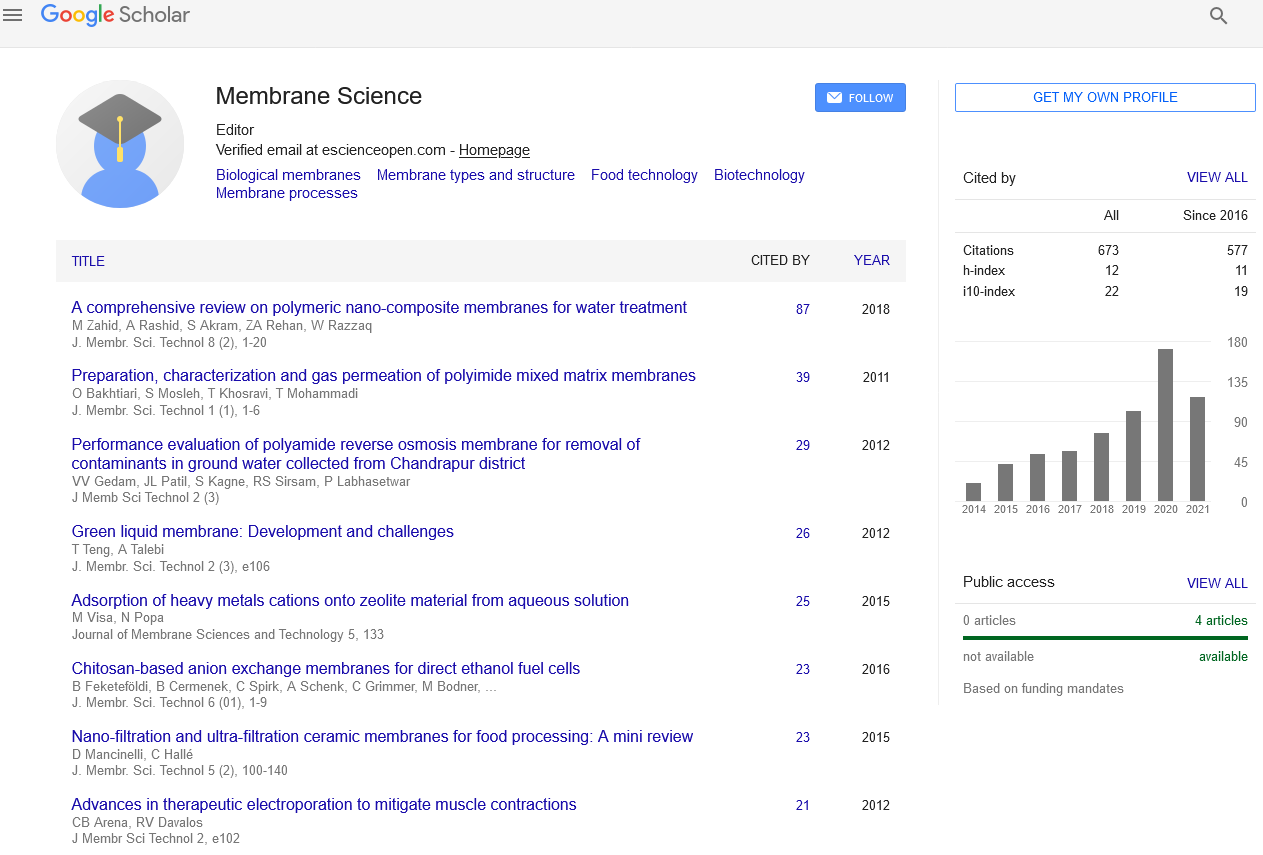Indexed In
- Open J Gate
- Genamics JournalSeek
- Ulrich's Periodicals Directory
- RefSeek
- Directory of Research Journal Indexing (DRJI)
- Hamdard University
- EBSCO A-Z
- OCLC- WorldCat
- Proquest Summons
- Scholarsteer
- Publons
- Geneva Foundation for Medical Education and Research
- Euro Pub
- Google Scholar
Useful Links
Share This Page
Journal Flyer

Open Access Journals
- Agri and Aquaculture
- Biochemistry
- Bioinformatics & Systems Biology
- Business & Management
- Chemistry
- Clinical Sciences
- Engineering
- Food & Nutrition
- General Science
- Genetics & Molecular Biology
- Immunology & Microbiology
- Medical Sciences
- Neuroscience & Psychology
- Nursing & Health Care
- Pharmaceutical Sciences
Abstract
N-chlorination and Orton Rearrangement of Aromatic Polyamides, Revisited
Giancarlo Barassi and Thomas Borrmann
Polyamide membranes are widely used in water desalination. It is known that they suffer degradation due to the presence of free chlorine. This communication shows a detailed chemical reaction mechanism for the N-chlorination and Orton rearrangement of poly (m-phenylene isophthalamide), which is the linear aromatic polyamide component of the commonly used B-9 Permasep� membrane. The N-chlorination of this aromatic polyamide causes the loss of hydrogen bonding. This triggers conformational changes in the polymer; the polymer becomes less rigid and, void spaces open up, which decreases solute rejection and increases water flux. The N-Chlorination reaction is reversible in alkaline media. Therefore, if the polymer is suspected to have come into contact with hypochlorite anions or hypochlorous acid immediate cleaning with sodium hydroxide could reverse the N‑chlorination. Conversely, the N-chlorination is acid catalyzed; hence, special care has to be taken during the cleaning stage, when HCl is used. Furthermore, N-chlorinated aromatic polyamides can undergo an Orton rearrangement, which is also promoted in acidic media, resulting in the formation of ortho- or para-chloro substituted analogues of the aromatic amide moiety. The chloro group causes a strong negative inductive effect weakening the amide bond making it more susceptible to hydrolysis, which eventually produces chain scission.


